Visiting a Thailand elephant sanctuary has been on my bucket list for a long time. It’s something that I wanted to do when I first came to Thailand in 2017. Alas, circumstances prevented us from going to an elephant park on that visit.
I have regretted it ever since.
So when my husband and I decided to spend the holidays in Thailand this year, I vowed not to make the same mistake. This time I was determined to visit an elephant sanctuary where I could see these gentle giants for myself.
I wasn’t content to visit just any elephant sanctuary in Thailand, however. Many so-called “sanctuaries” allow unethical practices such as giving rides to tourists on the elephants or training them to perform tricks.
So I did some research.
Ok that’s putting it mildly. I spent hours learning about the most ethical elephant sanctuaries, rescue camps and hospitals across Thailand. And as I conducted my research, one name kept cropping up over and over again: Elephant Nature Park in Chiang Mai Province, Northern Thailand.
We proceeded to book a tour of the park and spent a magical day there in December 2021 – just before Christmas. It was the best present I could have asked for.
If you’re interested in visiting a Thailand elephant sanctuary, Elephant Nature Park is definitely one of the best ones in the country. Keep reading to learn why and for an overview of our visit there.
Table of Contents
A Brief History of Asian Elephants in Thailand
The official animal of Thailand, Asian elephants are also an endangered species. Due to extensive logging, much of the natural habitat needed to support elephants in the wild has been destroyed.
There are only 50,000 Asian elephants left on the entire planet. The number of elephants in Thailand plummeted to 3,456 captive elephants in 2007, along with approximately 1000 wild elephants.
Elephants have played a major role in Thailand’s history and performed manual labor for centuries. Asian elephants were widely used in the logging industry until Thailand banned logging in 1989. After that time, owners had to learn new ways to make money so they could keep their elephants fed.
At first, many elephants and their owners turned to begging. The elephants were often forced to perform tricks or beg for food. Other elephant camps turned to the tourism industry and offered elephant rides (also called elephant trekking) to tourists. These elephants were often kept in small pens or chained many hours of the day.
Unfortunately, the training required to tame elephants is often quite inhumane. Many captive elephants have undergone a process called elephant crushing, where they are placed in small cages and undergo corporal punishment until they submit to humans.
Thankfully, organizations such as Save the Elephant and Elephant Nature Park are helping elephant camps all over Thailand transition to more humane practices. Through outreach and education, they are partnering with trekking camps to help create business models based on ethical elephant tourism.
Why is Elephant Nature Park an Ethical Thailand Elephant Sanctuary?
While there are many elephant sanctuaries across Thailand doing excellent work, Elephant Nature Park stands out among the best.
Originally founded in 1998, ENP is a 250-acre sanctuary for distressed elephants from all over Thailand. Many of the animals in the park are disabled or are recovering from injuries sustained from abusive practices in the logging or tourism industries.
Elephant Nature Park is consistently recommended by organizations promoting ethical elephant treatment such as Responsible Travel, The Guardian, World Animal Protection, and countless others.
This is because ENP, along with its sister non-profit organization Save Elephant Foundation, are pioneers in the field of elephant conservation. Both organizations were founded by Sangduen “Lek” Chailert, a renowned conservationist and activist for the welfare of Asian elephants.

Lek Chailert with baby elephant Navaan. Photo courtesy of www.saveelephant.org.
If the name Lek Chailert sounds familiar, she was featured in the moving documentary Love and Bananas: An Elephant’s Story. The documentary tells the story of how Chailert, along with her team, rescued a 70-year-old emaciated elephant named Noi Nah and brought her to Elephant Nature Park.
More importantly, Chailert convinced Noi Nah’s former owners to transition into an elephant sanctuary. Now this former trekking camp is known as Elephant Haven and allows their elephants to live without saddles or chains. This is just one of many trekking camps that have transitioned to sanctuaries under Lek’s guiance.
Chailert was also named by Time Magazine in 2005 as one of Asia’s Heroes for her work on elephant conservation.
Elephant Nature Park is not only an amazing Thailand elephant sanctuary – it rescues other animals as well. During our visit we saw rescued buffalo, cats and dogs on the property who were all living their best lives at the park.
What Makes an Ethical Elephant Encounter… Ethical?
By now, I’ve used the term “ethical” a few times in this article in reference to visiting a Thailand elephant sanctuary. The term can have various meanings depending on who uses it. So what does it mean in this article?
After depending on humans their entire lives, most rescued elephants cannot survive in the wild. So the goal of any Thailand elephant sanctuary or park should be to enable the elephants to have as natural of a life as possible while in captivity.
This means providing elephants with plenty of room to roam around and to form natural relationships with eachother. They should have easy access to water for bathing and opportunity to exercise by walking in the jungle.
The use of bullhooks or other forms of punishment should never be used (even when the tourists aren’t looking). The only possible exception is in extreme emergencies, such as to save someone’s life. They also should not be chained up as a rule, except perhaps in the course of providing necessary medical treatment.
Elephants shouldn’t be forced to give rides to tourists. Some organizations allow mahouts (elephant trainers) to occasionally ride on their elephants to help guide them or protect them from harm. Others do not.
If you find an elephant park that allows tourists to ride the elephants or trains the elephants to paint or to perform tricks – avoid it. Elephants that are regularly chained up or are confined in small pens are other red flags to look for.
Touching or Bathing Elephants
What about touching or bathing elephants? When I researched this subject, I found less of a consensus in the literature.
Some conservation organizations vehemently oppose allowing tourists to touch elephants under any circumstances. Others allow it on a limited basis.
This is a subject that seems to be evolving over time. Elephant Nature Park used to allow tourists to bathe their elephants but the program was phased out several years ago. Other elephant camps allow visitors to bathe the elephants under supervision of the mahouts.
While we were allowed to touch two elephants during our visit to ENP, the interaction was very limited. These particular elephants were ones who had already been socialized to humans before they were rescued. Our group size was small and the interaction was very short.
I wouldn’t be surprised if this practice is also phased out over time. It will be interesting to see how the issue continues to evolve.
My Visit to Elephant Nature Park
We visited Elephant Nature Park in December 2021 when the numbers of tourists were low due to the COVID pandemic.
Our visit began at 8:00 am in the city of Chiang Mai. Transportation is included in the ticket price, so a van picked us up at our lodging. From there, we took a scenic drive through the countryside to the elephant sanctuary which lasted for about 1.5 hours.
During the drive, our tour guide gave us some background about the elephants in the park. She was quite informative and seemed to know all the elephants by name.
Please note that there are several different tour packages (and volunteer opportunities) that visitors can choose on the Elephant Nature Park web site. Not all of them include a visit to the skywalk.
Elephant SkyWalk “Hands-Off” Project
Since we chose the Elephant SkyWalk package for our visit, our first stop of the day was the park’s “Hands-Off” project.
This is an area of the sanctuary where the elephants are segregated away from visitors and can only be viewed from a skywalk around the perimeter. This herd of elephants lives together in a natural setting which includes access to the river and custom-built pools.
We spent about an hour slowly walking around the skywalk and watching the elephants from a distance. It was their lunchtime when we arrived and they happily munched on giant piles of corn stalks.
I’d never seen an elephant eating up close before and the experience was *magical*. It was the first of many magical elephant encounters that I would experience throughout the day.
When lunchtime was over, the elephants ambled to a different enclosure and feasted on sugarcane and fruit for dessert.

Elephants eating a dessert of bamboo in the SkyWalk “Hands Off” project area of Elephant Nature Park
Inside the Main Part of Elephant Nature Park
After the SkyWalk portion of our tour was over, we piled into the min-van and drove to the main area of Elephant Nature Park. Here, we saw elephants in closer proximity.
Our guide informed us that many of the healthy elephants are walked each day by their trainers (mahouts) to the jungle. The ones that were left behind were primarily too old or disabled to make the journey.
The first elephants we visited were fed on a special diet. These elephants could not chew and digest whole corn stalks like the other elephants in the park, so they ate pre-shredded corn stalks.
As we continued our tour, we passed another elephant who was injured after stepping on a landmine. Even though the incident happened 10 years ago, she is not completely healed.
The staff at Elephant Nature Park cleans her wound and replaces the bandages on her foot twice a day.
Tilly
Next for the highlight of my day: meeting Tilly!
Tilly is approximately 40 years old and has a dislocated hip. She was rescued from a trekking camp 10 years ago and has lived at Elephant Nature Park ever since.
She has a sweet disposition and we were allowed to touch her very carefully while she munched on some corn. Tilly is the first elephant I have ever touched and I was surprised at how hairy she is!
You can learn more about Tilly here: Tilly.
Medo
After meeting Tilly, we wandered to another area of the park where we met another special elephant – Medo.
Medo is the most visibly disabled elephant that we saw during our visit. Her story is heart-wrenching.
She sustained major injuries while working in the logging industry and broke rear left ankle. Since she was no longer able to work after that, her previous owners forced her to mate with a large bull in musth. Rather than simply breeding with her, the bull attacked her and dislocated her backbone.
Luckily for Medo, she was rescued 15 years ago and has lived at Elephant Nature Park ever since.
You can learn more about Medo here: Medo
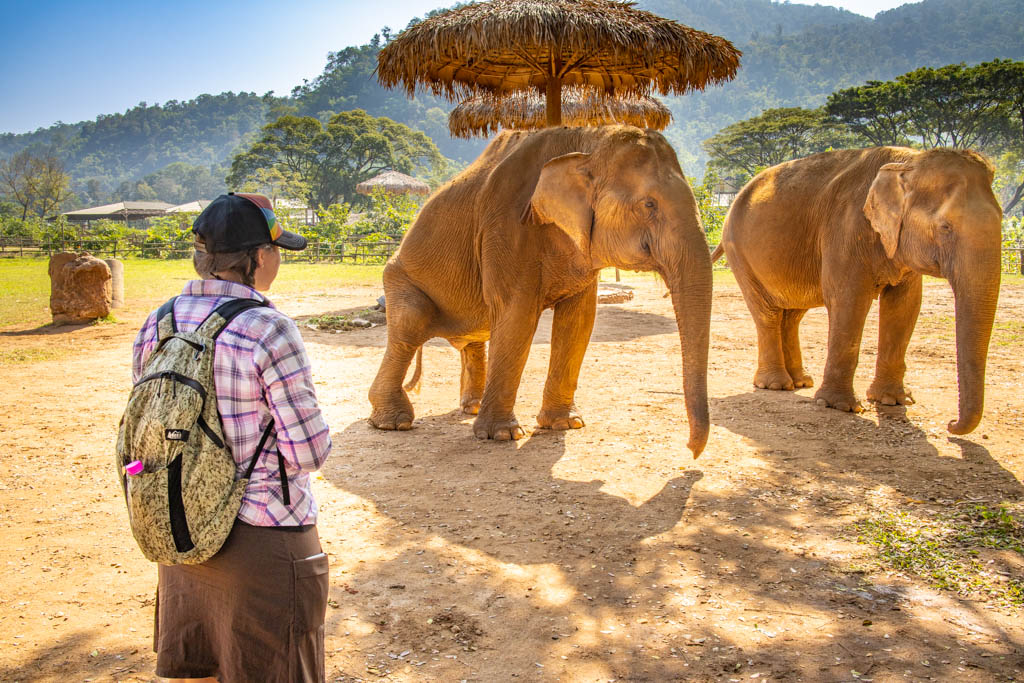
Medo, on the left, sustained horrible injuries from years of abuse. The other elephant in the photo is blind.
Baby Elephants at Elephant Nature Park
During our visit to Elephant Nature Park, we got to observe a few adorable baby elephants… from a distance.
The park does not have a breeding program as it is not considered ethical to breed elephants into captivity. The males are kept separated from the females to ensure that this does not happen.
That being said, the elephants get up to some sneaky shenanigans sometimes and break through their fences. So babies are occasionally born as a result.
Let them Eat Cake!
After a surprisingly delicious vegetarian buffet lunch, we went for a walk along the river where we observed several small herds of elephants clustered together.
One of those herds was in for a big treat. A donor purchased a special “elephant cake” for the group, which was an enormous platter that was beautifully decorated with rice and all kinds of yummy fruit. We got to watch as the elephants made short work of this delicious feast.
Staff at the park filmed the entire experience and shared it with the donor afterwards. What a creative and unusual gift idea!
If you’re interested in purchasing a celebration cake, you can do so here: Gentle Giants Ele-Celebration Cakes.
Dog and Buffalo Rescue Projects
Given the park’s name, I was only expecting to find elephants at ENP. So I was happily surprised to encounter lots of other rescued animals roaming the park as well.
While the park rescues lots of different kinds of animals, we primarily saw dogs and buffalo (other than elephants of course).
The buffalo roamed the same pastures as the elephants and they seemed to generally tolerate each other.
We saw lots of dogs wandering the park too. Some were kept in kennels, while others had the run of the park and seemed to roam as they pleased. A few of the dogs were not able to walk on their own and had special wheelchairs attached to their hind legs.
Cat Kingdom
Just when I thought the day couldn’t get any better, we ended the day by visiting Cat Kingdom. This is an area of the park that is completely devoted to caring for rescued cats.
I honestly couldn’t believe my eyes when we entered the cat enclosure. I was greeted with lush gardens and beautifully landscaped gardens complete with a waterfall… and thousands of cats! There were little cat beds and perches and fun places for them to hang out all over the place.
It felt like I had wandered into the cat version of the Garden of Eden.
The highlight of my visit was when one of the cats literally jumped right into my arms. I was standing up, mind you, and was not expecting it at all. But I didn’t mind and we had a little cuddle session before it was time to leave.
Tips for Visiting Elephant Nature Park (or any Thailand Elephant Sanctuary)
If you’re planning a visit to Elephant Nature Park, be sure to buy your tickets in advance. Before the pandemic it wasn’t uncommon for tickets to sell out weeks ahead of time. This wasn’t an issue during our visit thanks to COVID, but be prepared just the same.
All visits include transportation to and from Chiang Mai. Don’t try to book a visit on the day that you arrive in town as flights and buses are often late and they cannot wait for you.
All visitors and volunteers are covered by ENP’s accident insurance up to 200,000 THB. That being said, the park recommends that you also carry individual emergency medical and travel insurance.
What to Bring
When visiting Elephant Nature Park or any Thailand elephant sanctuary, bring along a backpack with a few essentials such as:
- Sturdy Walking Shoes – Sturdy hiking or walking shoes are a must. Personally, I’m a big fan of Altra Lone Peak Trail Running Shoes.
- Sun Hat – Protect your face (and scalp) with a broad sun hat. This sun hat is great because it has a wide brim and no back so it doesn’t bump into my backpack.
- Sun Shirt – Protect your neck and arms from the sun with a long-sleeved sun shirt. The Columbia Tamiami II is highly rated and comes with built-in UPF 40 sun protection.
- Sun Screen – Apply sun screen before visiting the park and bring some along in case you need to reapply. I like these Banana Boat 1-oz tubes of sunscreen because they are super tiny and hardly take up any room in my bag.
- Camera – I love taking photos and always bring a camera along on my adventures. I use the Canon PowerShot G7X Mark II because it is lightweight yet has many advanced features.
Also be sure to bring along a water bottle. Don’t forget an umbrella or raingear during the rainy season.
How You Can Help the Elephants
The COVID pandemic has been difficult for many elephant sanctuaries and parks across Thailand. Many elephant sanctuaries rely on tourism dollars and, without tourists coming in, some have had to close down or get creative.
To help support the elephants at Elephant Nature Park, you can donate to their sister non-profit organization Save Elephant Foundation or sponsor an elephant. Or, as previously mentioned, you can buy an elephant a cake with a message on it for a loved one as a creative gift idea.
You can also visit Elephant Nature Park in person or even volunteer to help elephants for a week.
Perhaps the best thing you can do, however, is to spread the word about the plight of Asian elephants.
For more ways to help Elephant Nature Park, visit their web site: Elephant Nature Park: How You Can Help


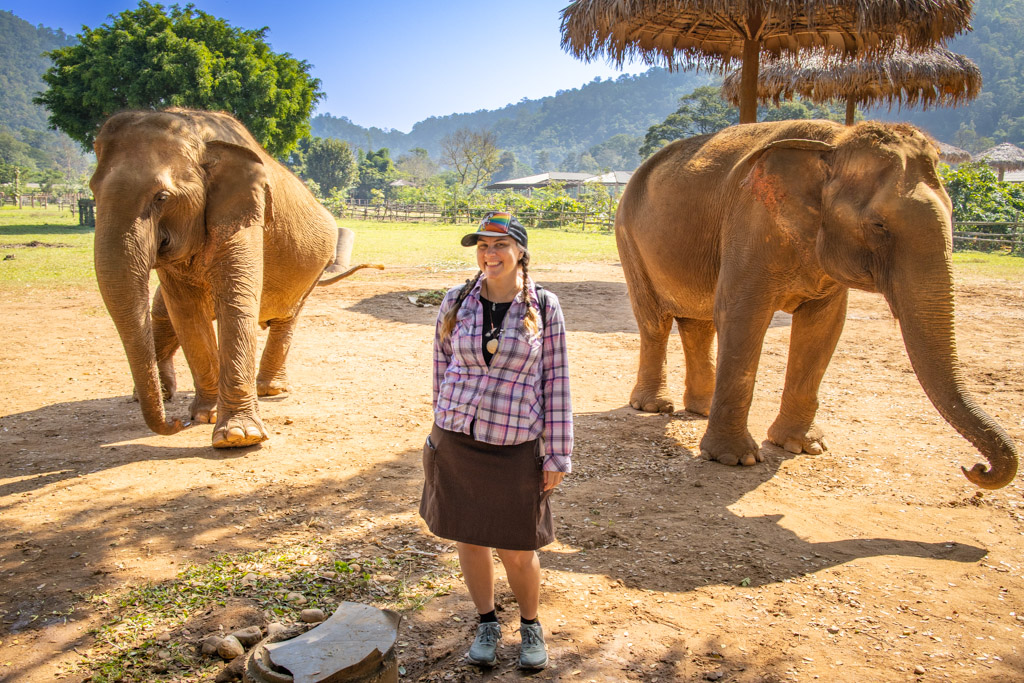
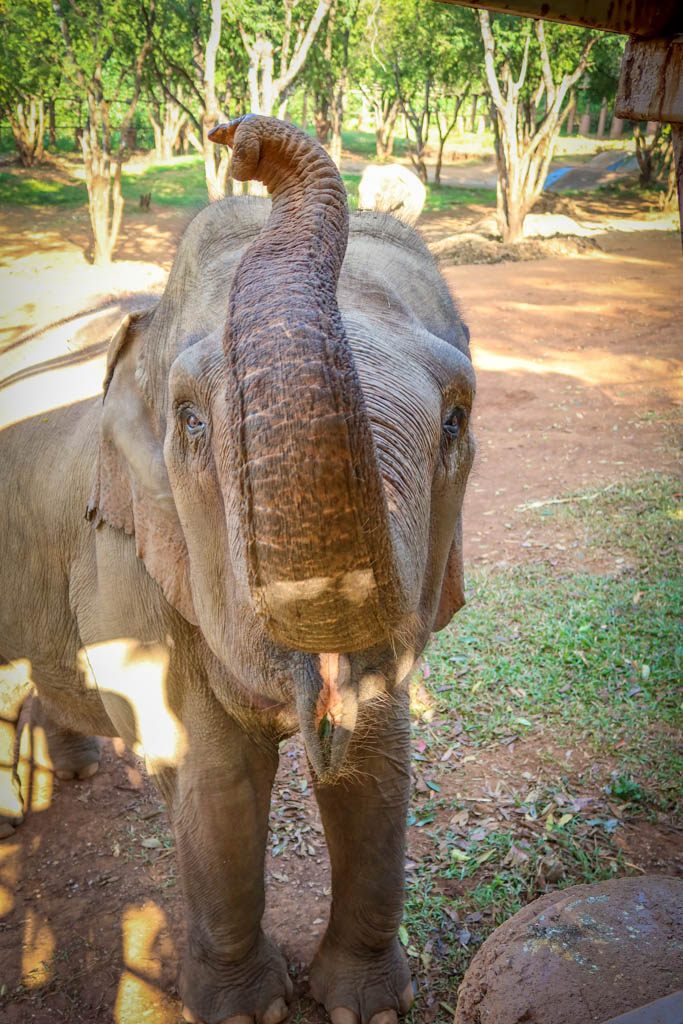

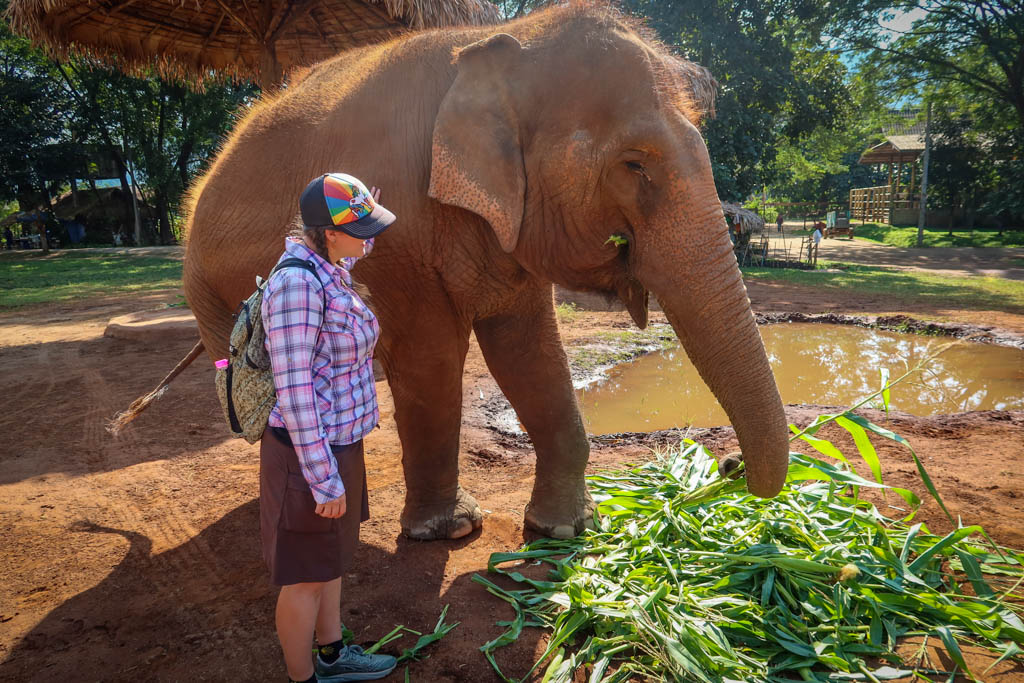

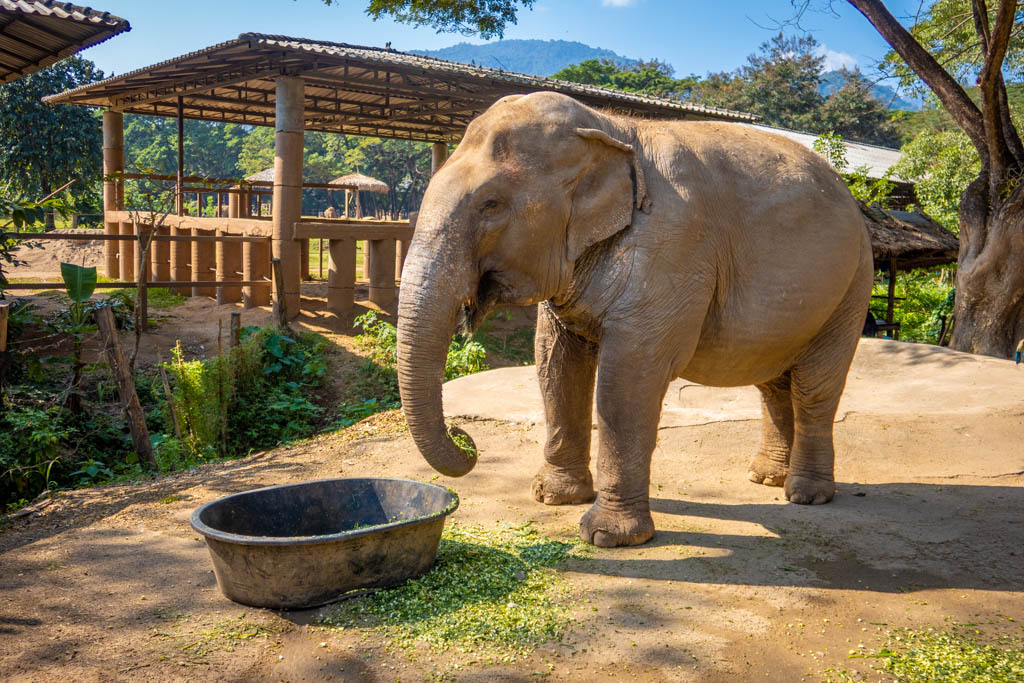
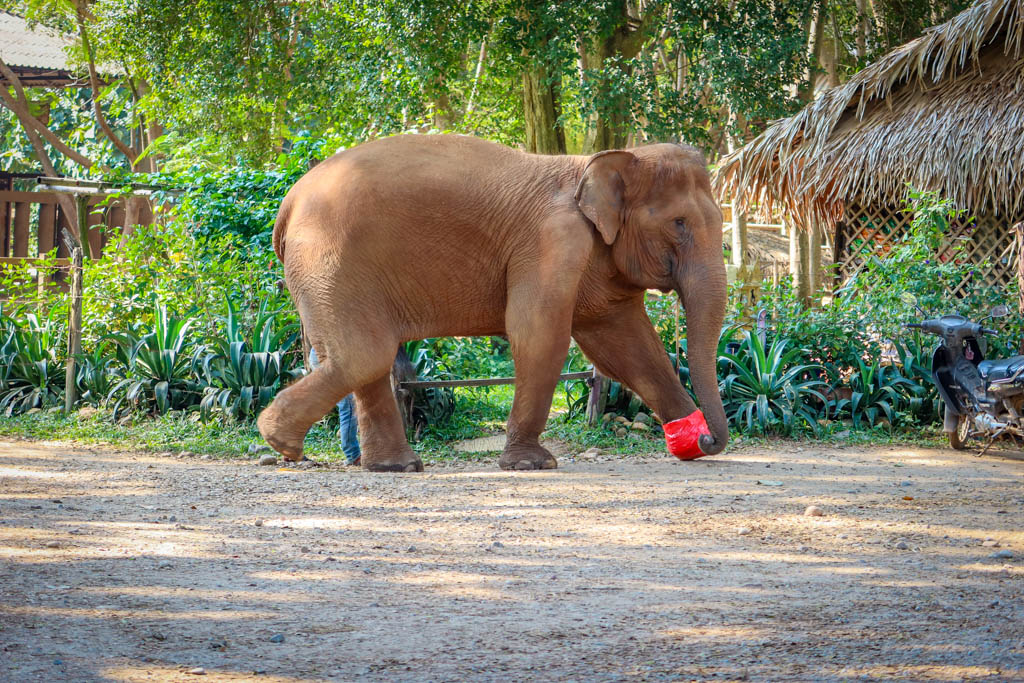

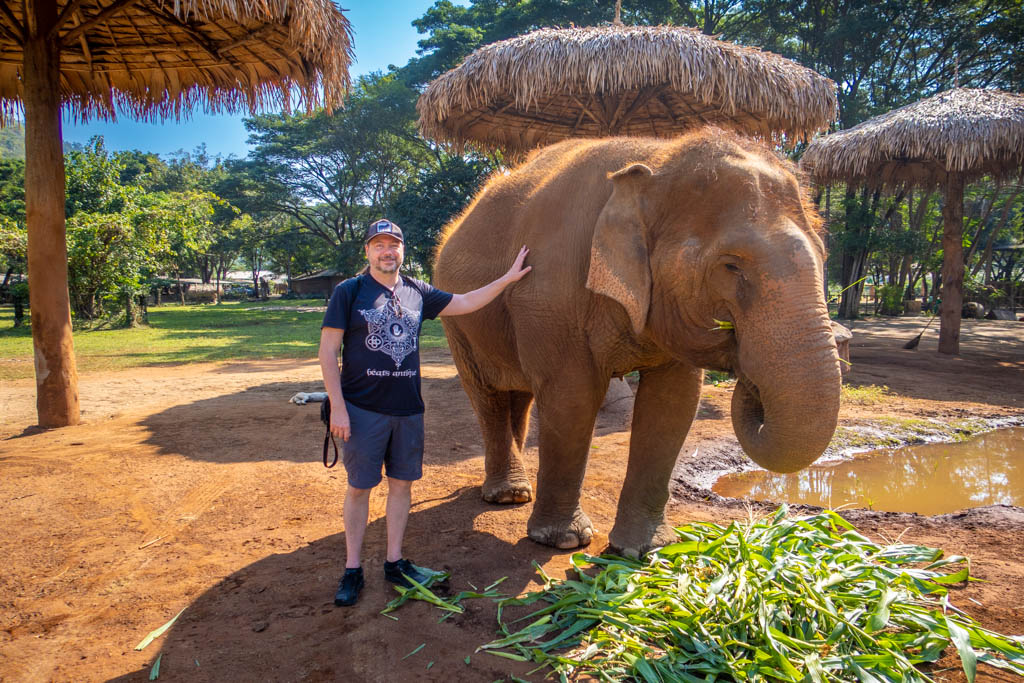
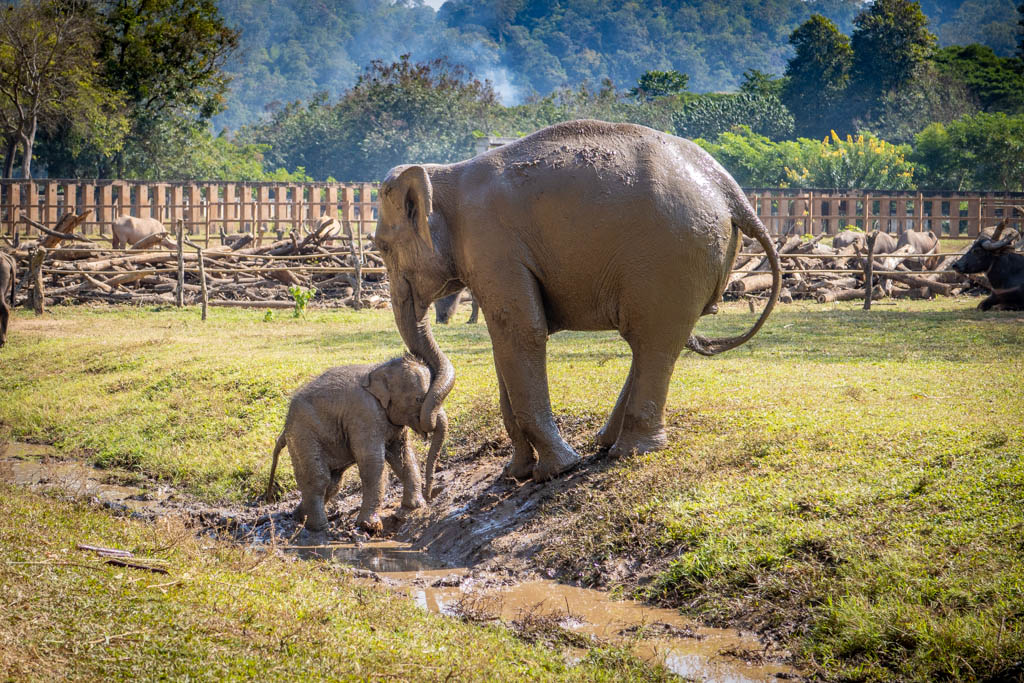
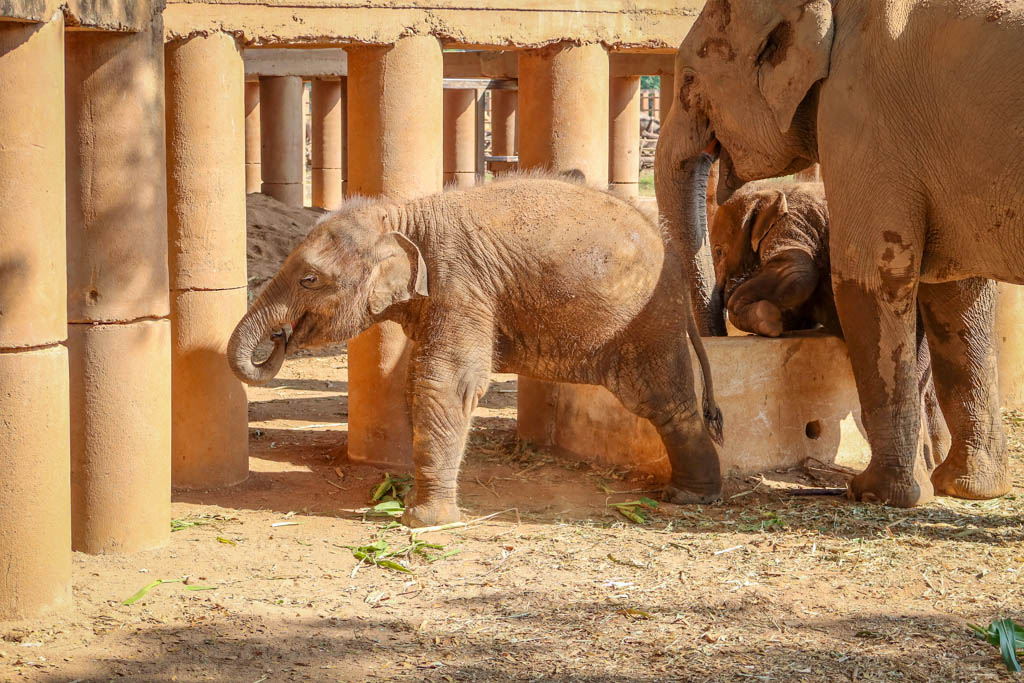

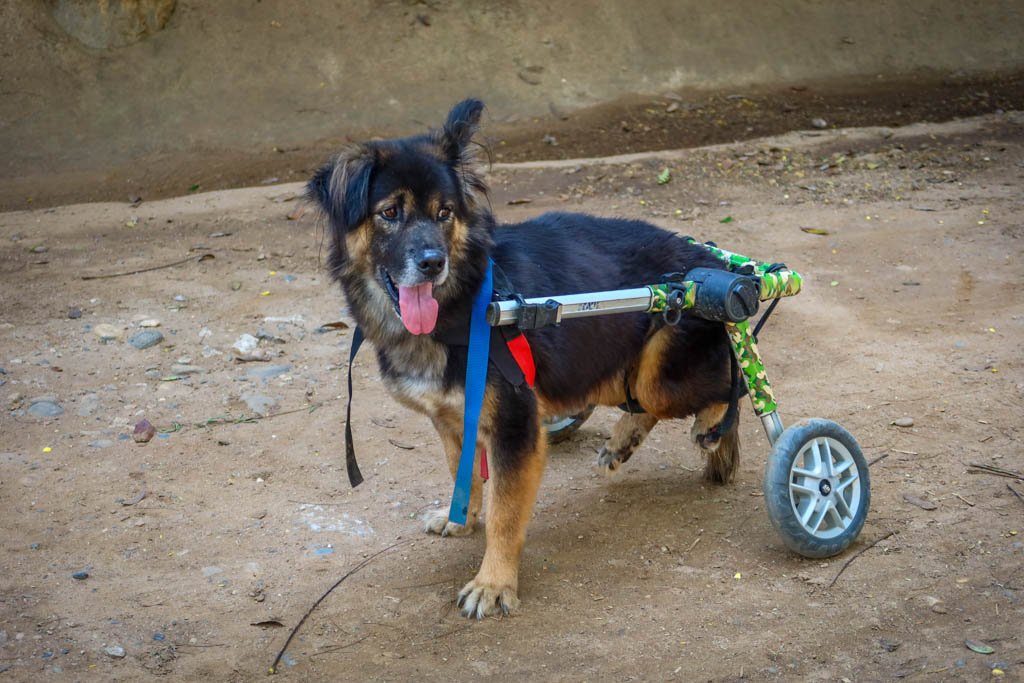
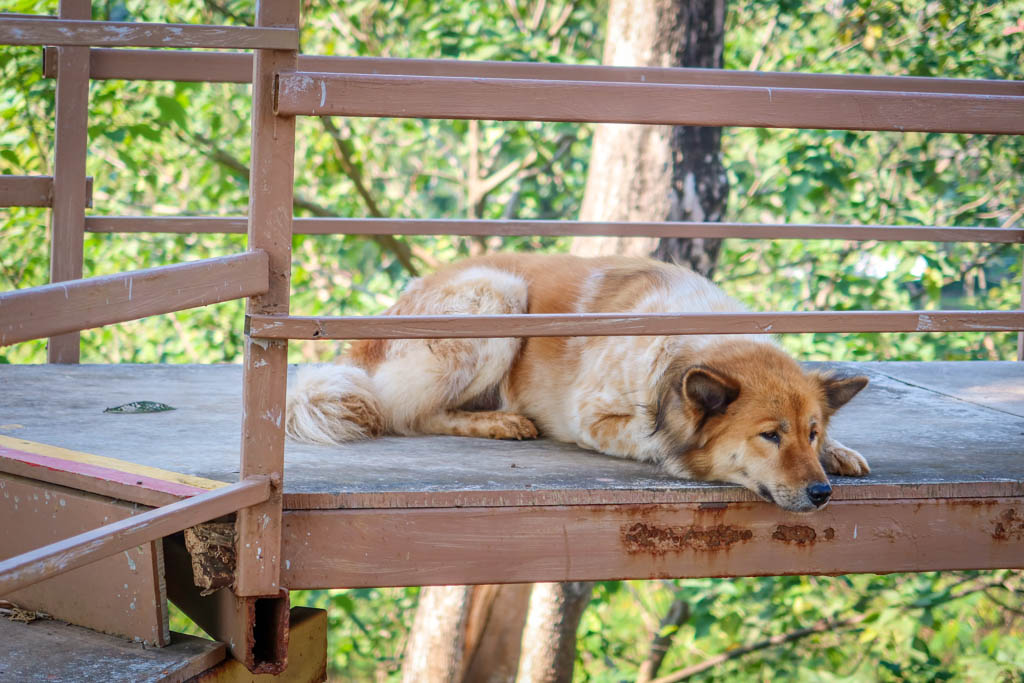
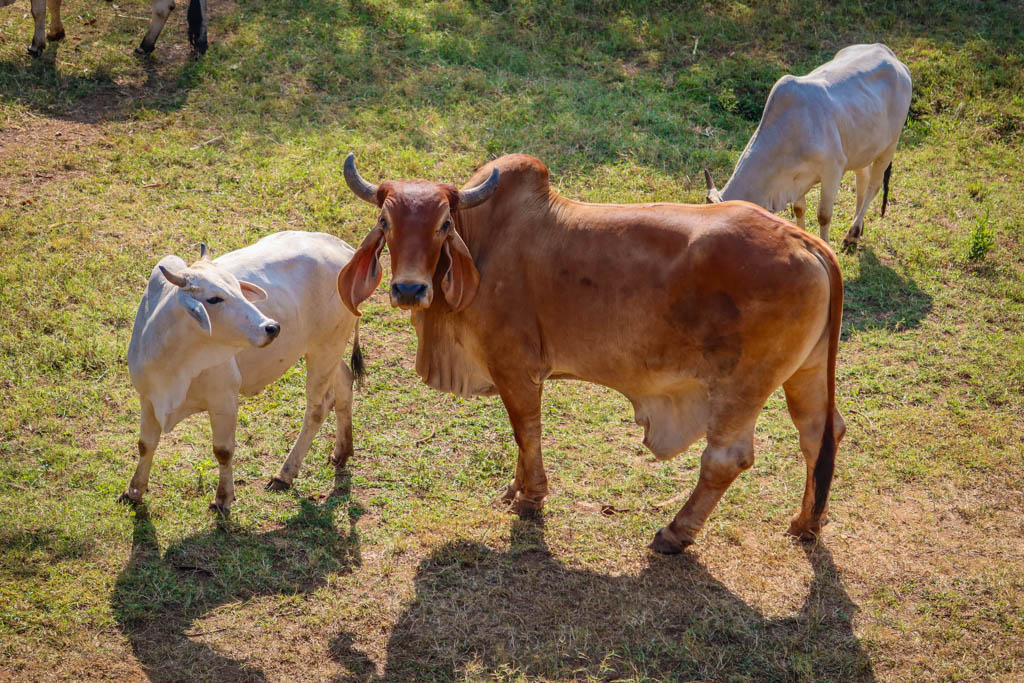
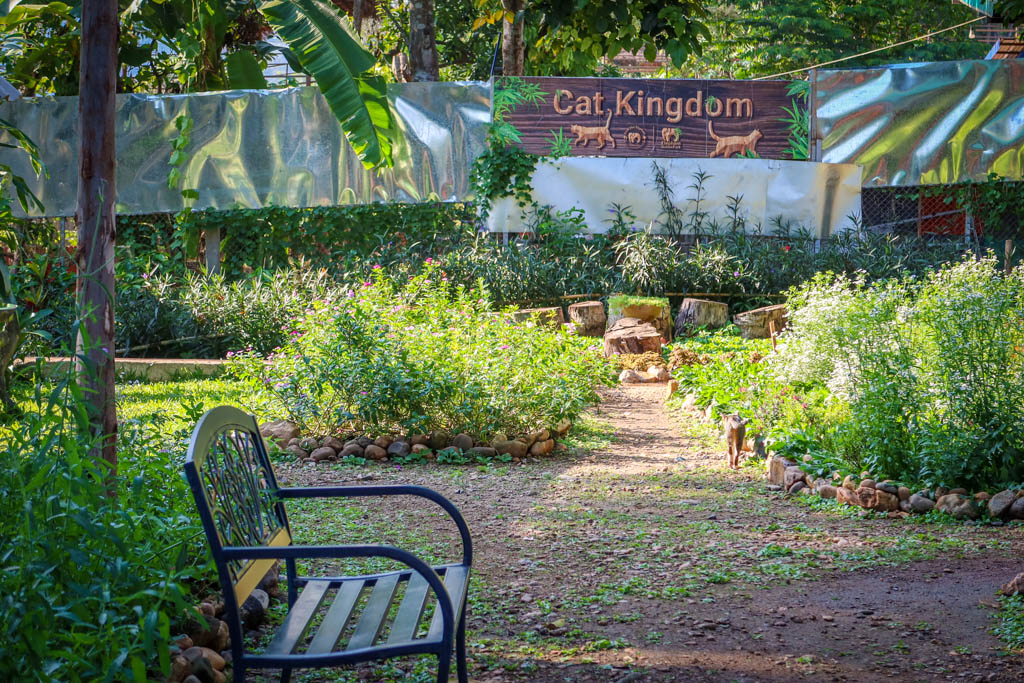


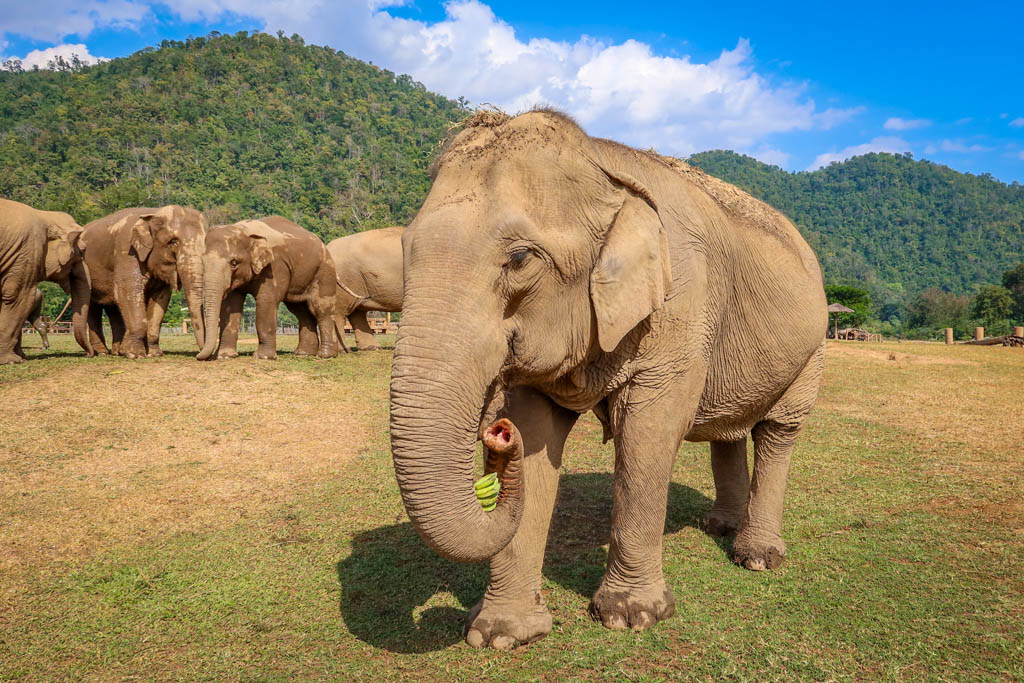

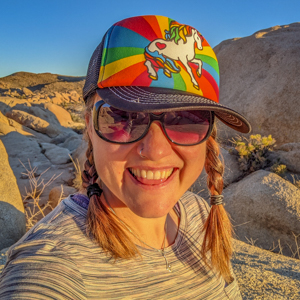

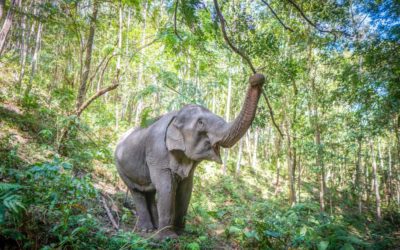
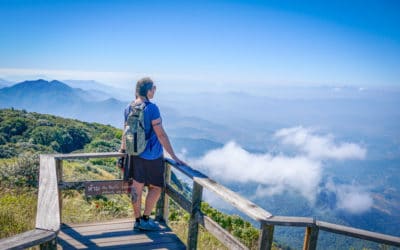
![9 Amazing Chiang Mai Markets, Walking Streets and Flea Markets [2022]](https://aramblingunicorn.com/wp-content/uploads/2022/12/Chiang-Mai-Gate-Market-Outside-400x250.jpg)
0 Comments